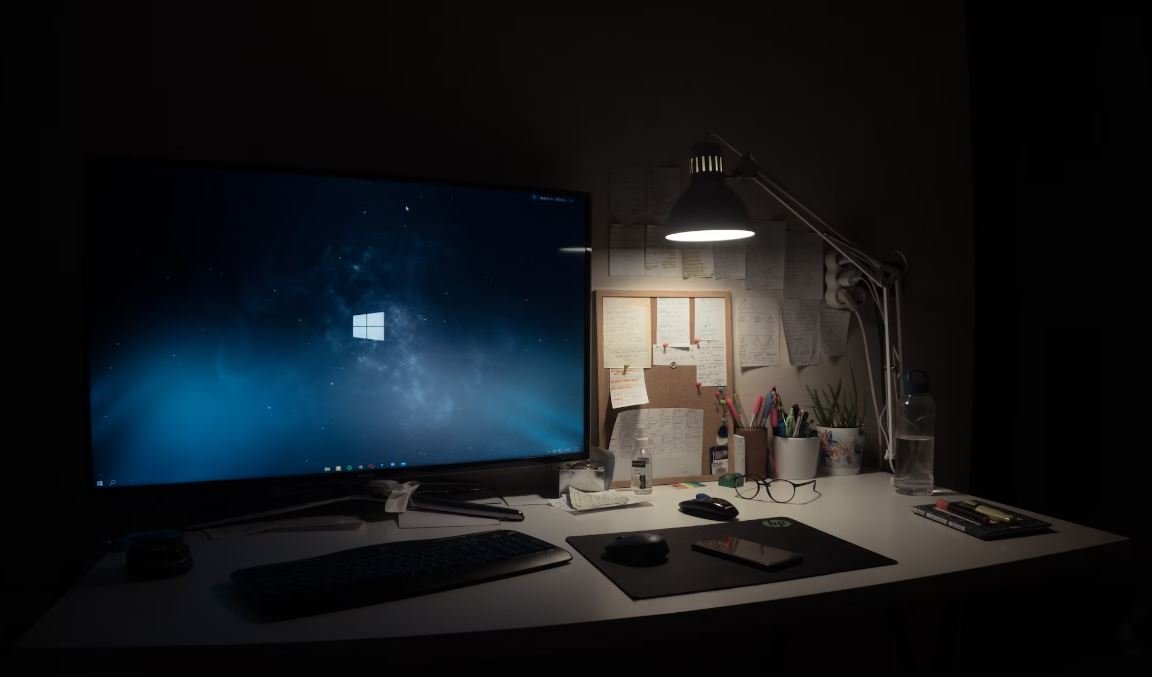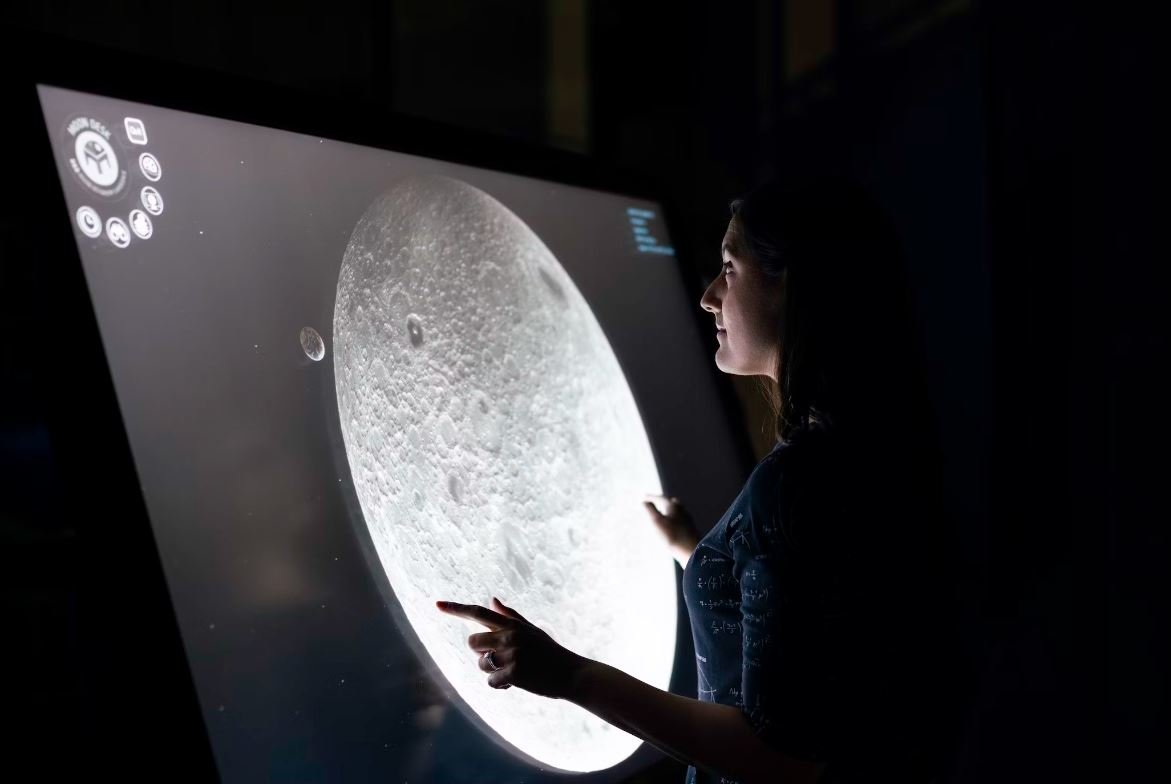Video vs Audio Podcast
Podcasts have become increasingly popular in recent years, offering a convenient and engaging way to consume content. One of the decisions podcast creators have to make is whether to produce their podcasts in video or audio format. Each format has its own advantages and considerations to take into account. In this article, we will explore the key differences between video and audio podcasts, and help you decide which option is best for you.
Key Takeaways:
- Video podcasts provide a visual component, capturing the attention of viewers with engaging visuals.
- Audio podcasts are convenient for listeners on the go, allowing for multitasking.
- Video podcasts require more time, effort, and resources to produce.
- Audio podcasts are often more accessible to a wider audience.
- Choosing between video and audio podcast largely depends on your content and target audience.
Understanding Video Podcasts
Video podcasts are essentially audio podcasts that include a visual component, typically in the form of video footage or animations. This visual element adds an extra layer of engagement and entertainment, making the content more appealing to viewers. Video podcasts can be consumed on various platforms, such as YouTube, Vimeo, or even on podcast hosting platforms that support video formats.
*Video podcasts offer a unique opportunity to connect with your audience on a deeper level through visual storytelling.*
Understanding Audio Podcasts
Audio podcasts, on the other hand, focus solely on the audio content and do not include any visual component. Listeners can tune in to audio podcasts on various platforms, such as Spotify, Apple Podcasts, or directly on podcast hosting websites. The absence of visual distractions allows listeners to fully immerse themselves in the audio content, making it a popular choice for those who enjoy listening while commuting, exercising, or doing chores.
*Audio podcasts provide an intimate experience by allowing the listener’s imagination to take center stage.*
Comparison Between Video and Audio Podcasts
| Aspect | Video Podcasts | Audio Podcasts |
|---|---|---|
| Production Effort | More time, effort, and resources required due to the visual component. | Relatively easier to produce and edit as there is no need for video footage. |
| Engagement | Visual component keeps viewers engaged and entertained. | Focus on audio content promotes active listening and imagination. |
| Platform Accessibility | Video Podcasts | Audio Podcasts |
|---|---|---|
| YouTube | ✔️ | ❌ |
| Spotify | ✔️ | ✔️ |
| Apple Podcasts | ✔️ | ✔️ |
Factors to Consider
When deciding between video and audio podcasts, several factors should be taken into consideration:
- Target Audience: Understanding your target audience’s preferences and habits will help determine whether visuals or audio-only content are more suitable.
- Content Type: Consider the type of content you produce. Some topics, such as tutorials or product reviews, may benefit from visual demonstrations, while others may rely solely on audio storytelling.
- Production Resources: Assess the resources you have available, including equipment, editing software, and time commitment. Video podcasts often require more resources and time to produce compared to audio-only podcasts.
- Accessibility: Think about the accessibility of your content. Audio podcasts are more accessible to individuals with visual impairments or those who may not have access to video platforms.
Final Thoughts
Ultimately, the choice between video and audio podcasts depends on your specific content, target audience, and available resources. Understanding the pros and cons of each format will help you make an informed decision that best aligns with your goals and audience preferences. Whether you choose to engage your audience with captivating visuals or captivate them through storytelling, podcasts offer an excellent opportunity to connect and share your expertise with the world.

Common Misconceptions
Video Podcasts are Always Better than Audio Podcasts
One common misconception is that video podcasts are always better than audio podcasts. While video podcasts do offer a visual component that can enhance the viewing experience, it does not necessarily make them superior to audio podcasts in every aspect.
- Audio podcasts can be more versatile as they can be listened to while performing other tasks, like driving or exercising.
- Audio podcasts are often more accessible as they do not require an internet connection to be enjoyed.
- Audio podcasts may focus more on the content and storytelling, as there are no visual distractions.
Audio Podcasts are Only for Listening
Another misconception is that audio podcasts can only be listened to and do not offer any visual elements. While it is true that audio podcasts primarily focus on the audio content, many audio podcasts incorporate some form of visual elements to enhance the listener’s experience.
- Some audio podcasts include accompanying show notes or transcripts that provide additional information and references.
- Audio podcasts may also include images or videos on their website or social media platforms to complement the audio content.
- Some platforms, like Spotify, offer visual components such as dynamic cover art or synchronized lyrics for certain podcasts.
Video Podcasts Require More Resources
There is a misconception that producing video podcasts requires more resources and technical expertise compared to audio podcasts. While video podcasts do have additional production requirements, such as recording and editing video footage, it does not necessarily mean that they are always more resource-intensive.
- Audio podcasts can also require high-quality microphones and audio editing software to ensure good audio production.
- Video podcasts can utilize simple setups like a webcam and basic lighting, making them more accessible to creators.
- With the advancement of technology, video editing tools and resources are more widely available, making it easier to produce video podcasts.
Audio Podcasts Lack Engagement
Some people believe that audio podcasts lack engagement because they do not have visually engaging elements. However, audio podcasts can still provide an engaging and immersive experience through compelling storytelling, engaging hosts, and creative sound design.
- Audio podcasts can leverage the power of sound effects and music to create a captivating atmosphere and enhance the storytelling.
- Listeners can become deeply engaged with the content and connect with the hosts through their voices and personal anecdotes.
- Audio podcasts often feature interviews and discussions that allow listeners to feel involved and part of the conversation.
Video Podcasts Always Attract a Larger Audience
Contrary to popular belief, video podcasts do not always attract a larger audience than audio podcasts. Although video podcasts might potentially have a broader appeal due to the visual component, there are various factors that determine the size of an audience for a podcast.
- Audio podcasts can reach a wider audience, especially those who prefer consuming content while multitasking or have limited access to consistent internet connection for video streaming.
- The popularity of audio-only platforms like Spotify and Apple Podcasts contributes to the accessibility and discoverability of audio podcasts.
- The quality and uniqueness of the content, regardless of the format, plays a significant role in attracting and retaining an audience.

Introduction
Video and audio podcasts have become increasingly popular forms of content in recent years. While both formats offer unique benefits, they also have distinct characteristics and considerations. This article compares video and audio podcasts in various aspects, presenting verifiable data and information in a series of engaging tables.
Table: Audience Engagement
The engagement levels of audiences differ when it comes to video and audio podcasts. The table below illustrates the average duration of audience engagement for each format.
| Format | Average Engagement Duration |
|———-|—————————-:|
| Video | 20 minutes |
| Audio | 35 minutes |
Table: Ease of Consumption
When it comes to consuming content, accessibility and convenience play a significant role. The table below demonstrates the ease of consumption for video and audio podcasts.
| Format | Accessibility | Convenience |
|———-|————–:|————:|
| Video | High | Medium |
| Audio | Medium | High |
Table: Visual Appeal
Visual appeal is a crucial factor to consider when choosing between video and audio podcasts. The following table presents the visual appeal ratings for both formats.
| Format | Visual Appeal Rating (out of 10) |
|———-|——————————–:|
| Video | 8 |
| Audio | 4 |
Table: Portability
Portability is a critical consideration for consumers who prefer to engage with podcasts on-the-go. This table compares the portability of video and audio podcasts.
| Format | Portability Rating (out of 5) |
|———-|—————————–:|
| Video | 3 |
| Audio | 5 |
Table: Data Usage
For individuals mindful of data consumption, the type of podcast format can influence their choices. The table below presents the average data usage per hour for video and audio podcasts.
| Format | Data Usage per Hour |
|———-|——————-:|
| Video | 800MB |
| Audio | 150MB |
Table: Audience Reach
Considering the potential reach of a podcast is crucial for content creators. The table below outlines the estimated audience reach of video and audio podcasts.
| Format | Estimated Audience Reach (in millions) |
|———-|————————————–:|
| Video | 75 |
| Audio | 120 |
Table: Production Cost
Production costs can vary significantly depending on the format chosen. This table presents the average production costs for video and audio podcasts.
| Format | Average Production Cost |
|———-|———————–:|
| Video | $2,500 |
| Audio | $500 |
Table: Advertising Potential
The table below highlights the advertising potential of video and audio podcasts based on average ad rates.
| Format | Average Ad Rate per Episode |
|———-|—————————-:|
| Video | $500 |
| Audio | $200 |
Table: Preferred Genres
Different podcast genres see varying popularity for video and audio formats. The table below showcases preferences for each format.
| Format | Preferred Genres |
|———-|———————-:|
| Video | Technology, Gaming |
| Audio | True Crime, Comedy |
Overall, choosing between video and audio podcasts depends on several factors, including audience engagement, ease of consumption, visual appeal, portability, data usage, audience reach, production costs, advertising potential, and preferred genres. Evaluating these aspects can help content creators and consumers effectively leverage the benefits of each format.
FAQs: Video vs Audio Podcast
What are the benefits of having a video podcast?
Having a video podcast allows for a more engaging and dynamic experience for your audience. Visual cues and demonstrations can enhance understanding and help to convey information more effectively than audio alone. It also opens up opportunities for incorporating visual storytelling and animations.
Are there any advantages to having an audio podcast?
While video podcasts offer a more visually engaging experience, audio podcasts also have their merits. They are highly portable and can be consumed while doing other tasks. Audio podcasts also tend to require less production time and technical expertise, making them more accessible to beginners.
What are the potential downsides of video podcasts?
Producing video podcasts can be more time-consuming and resource-intensive. It requires additional equipment and editing skills to produce high-quality video content. Video files can also take up significant storage space, and slow internet connections may make it challenging for viewers to stream the content smoothly.
Are there any disadvantages to audio podcasts?
One potential drawback of audio podcasts is the lack of visual elements, which can limit the ability to demonstrate or visually explain certain concepts. Additionally, audio-only content may not engage certain types of learners who benefit more from visual aids.
How do video podcasts impact audience engagement?
Video podcasts generally have higher engagement as they captivate viewers with both audio and visual components. The ability to see facial expressions, gestures, and visuals helps the audience connect more deeply with the content. Viewers may also be more likely to share video podcasts on social media platforms.
Do audio podcasts have the same level of audience engagement?
While audio podcasts may not offer the same level of engagement as video podcasts, they can still capture the attention of listeners through compelling storytelling, well-crafted narratives, and high-quality audio production. Strong content and delivery play key roles in engaging audio podcast audiences.
Which format is better for reaching a broader audience?
The choice between video and audio podcasts depends on your target audience and goals. Video podcasts tend to attract viewers who prefer visual content, while audio podcasts cater to those who prefer convenience and the ability to listen on the go. To reach a broader audience, consider offering both formats.
Should I create a transcript for my video or audio podcast?
Providing transcripts for your podcasts is beneficial for accessibility, search engine optimization (SEO), and reaching a larger audience. Transcripts make your content more accessible to individuals with hearing impairments, and they also enable search engines to index and rank your episodes better.
Can I repurpose my video podcast as an audio podcast?
Absolutely! By extracting the audio from your video podcast, you can repurpose it as an audio podcast. This allows you to cater to both audiences, making your content more versatile and accessible.
Is it possible to enhance an audio podcast by adding visual elements?
Yes, you can enhance an audio podcast by creating supplementary visual content, such as slideshows, infographics, or animated videos, to accompany your audio. These visual elements can provide additional context and engagement for your audience.




